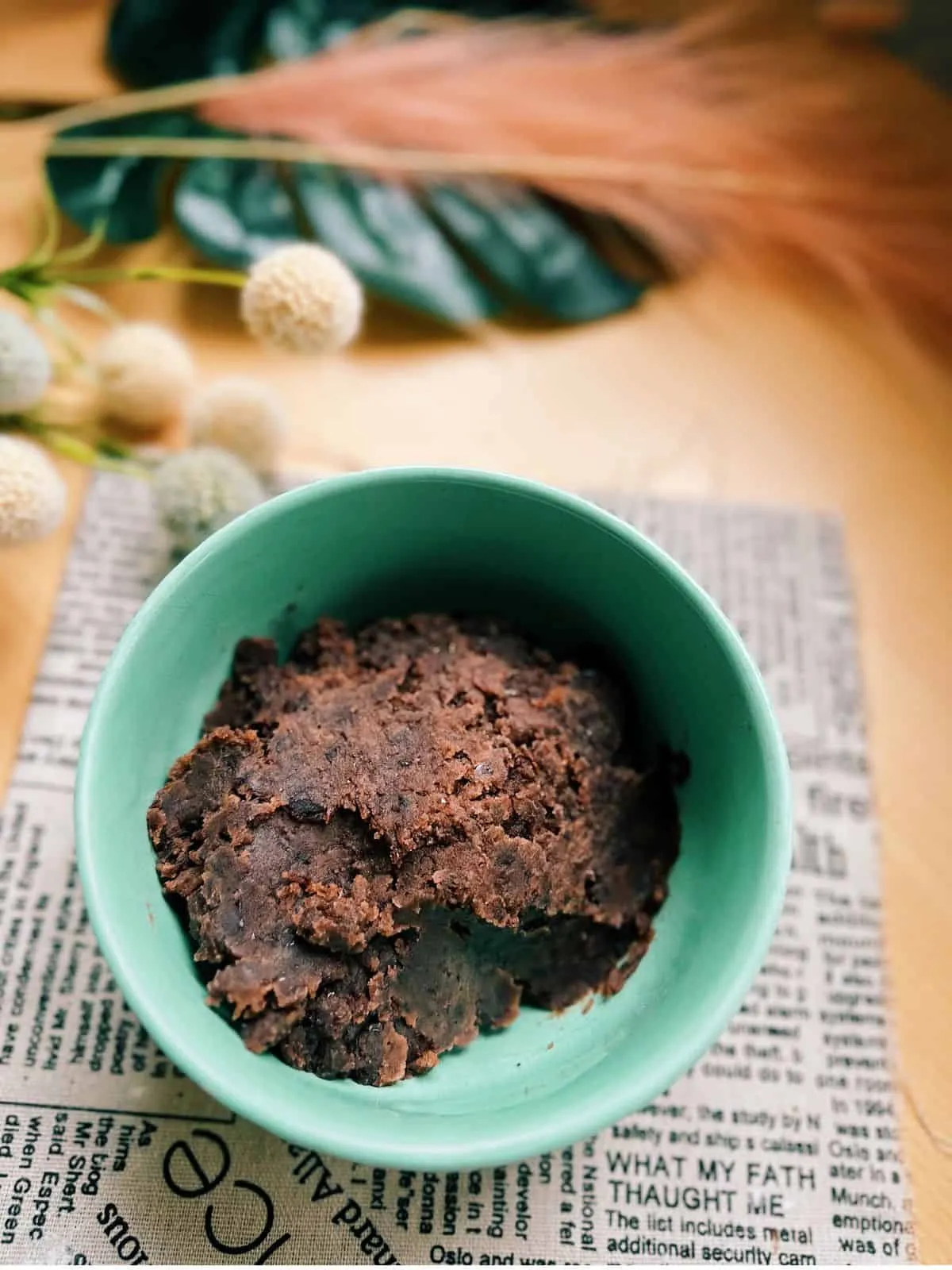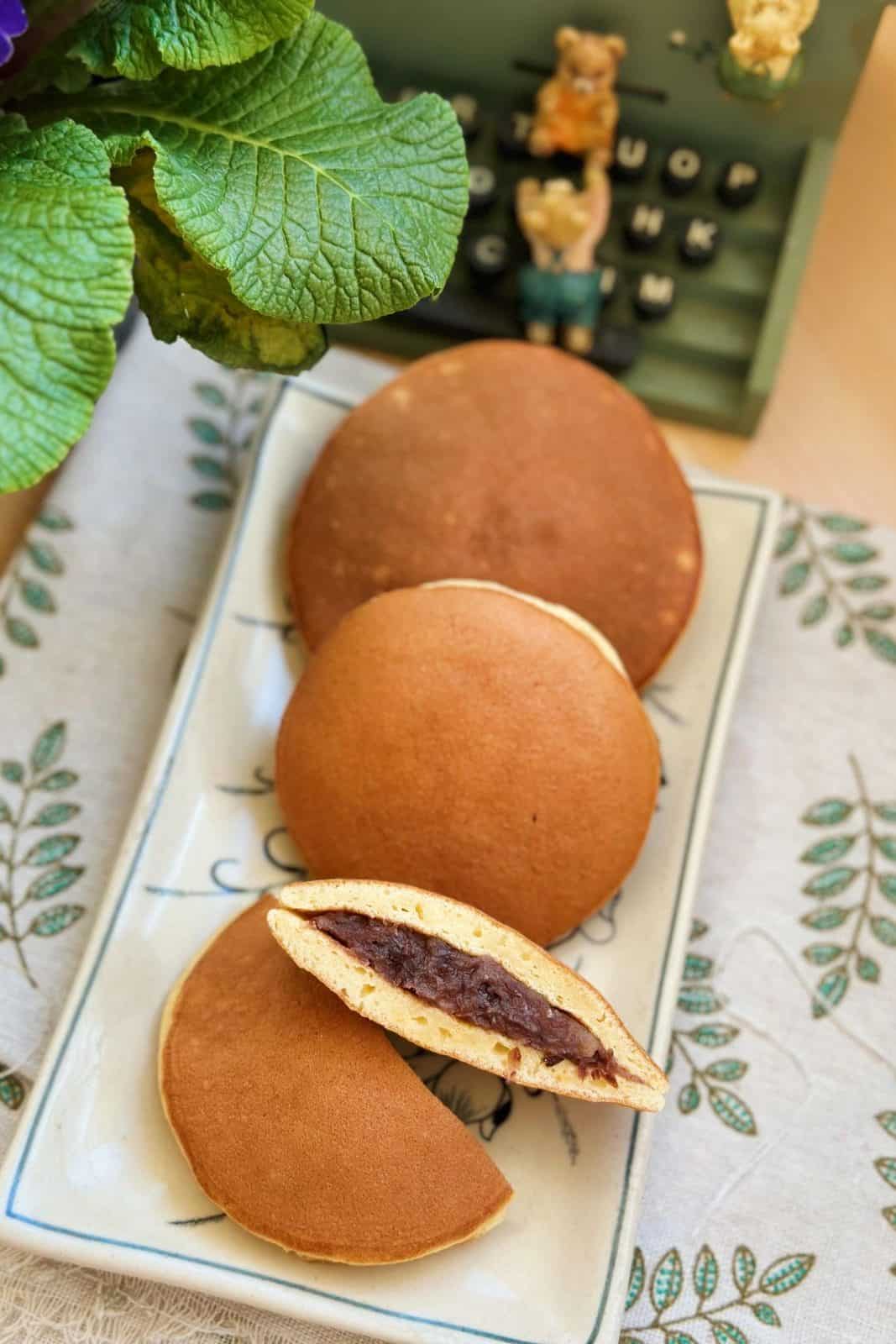Anko, a delightful Japanese red bean paste crafted from red adzuki beans, is a staple ingredient in many traditional Japanese sweets (Wagashi).
In this post, I’ll guide you through two simple methods for preparing Anko: a quick Instant Pot shortcut and the classic stovetop technique. Plus, my recipe yields a version that’s much less sweet than what you’ll find in stores.

What is Anko?
Anko (餡子) is a sweet red bean paste from Japan, made from adzuki beans, and it’s a star ingredient in many traditional Japanese desserts, or Wagashi.
Sweet red bean paste isn’t just popular in Japan—it shows up across East Asia. In China, it’s called Hong Dou Sha (紅豆沙), and in Korea, it’s known as Patso (팥소). Making it at home is usually better than store-bought: it’s fresh, you can control the sweetness, and there are no additives or artificial colors.
In Vietnam, red bean paste isn’t as common, but people love mung bean paste for similar reasons—it’s naturally sweet, smooth, and perfect for desserts.

There are three main types of Japanese red bean paste:
- Tsubuan (粒あん): Whole beans cooked with sugar, giving a chunky texture.
- Tsubushian (潰しあん): Beans are cooked and then mashed, resulting in a slightly smoother paste than Tsubuan.
- Koshian (漉しあん): Beans are sieved to remove skins, creating an ultra-smooth paste—the most popular type of Anko.
My recipe is a Tsubushian-style Anko: smooth but still with a little texture, just the way I like it.
Why I Love This Recipe

Time-Saving: The Instant Pot makes it easy to skip the long soaking and simmering, so you can have homemade Anko ready in no time.
Classic Option: Don’t have an Instant Pot? No worries—you can still make it the traditional way on the stovetop.
Better Sweetness: I’ve cut back on the sugar, so this Anko is less sweet but works perfectly as a filling for Daifuku Mochi, Dorayaki, or Taiyaki.
A Quick Note: Homemade Anko won’t have the shiny, glossy look of store-bought paste. And because it’s less sweet, it doesn’t keep at room temperature—store it in the fridge to stay fresh.
Ingredients
- Adzuki beans
- Sugar
- Salt
- Baking soda (optional, only if cooking on stovetop)
Tools
- Instant Pot (optional, for faster cooking)
- Food processor or large spoon (for mashing)
Instructions
Instant Pot Method
- Start by rinsing the dried adzuki beans under running water, discarding any floating bits. Drain well, then transfer the beans to your Instant Pot and add water in a 1:3 ratio (1 part beans to 3 parts water).
- Lock the lid and cook on high pressure for 25 minutes. When it’s done, let the pressure release naturally for 15–20 minutes. Check the beans by mashing a few with a spoon—they should be soft. Drain any extra water.
- Next, blend the beans to your preferred texture using a food processor, or simply mash them with a large spoon. Transfer the beans to a nonstick pan, add sugar and a pinch of salt, and cook over medium-high heat, stirring constantly to prevent sticking.
- Once the paste thickens, reduce the heat to medium and keep cooking until a line drawn through the paste stays visible, about 5–10 minutes. When it reaches the consistency you like, remove it from the heat, let it cool at room temperature, then store in an airtight container in the fridge for up to 3–4 days.


Stovetop Method
- Soak the adzuki beans in water overnight or for 6–8 hours. Drain and rinse, then put them in a pot with fresh water. Bring to a boil over medium-high heat, then drain the beans using a fine-mesh sieve.
- Return the beans to the pot and cover with water by 1–2 inches (2–5 cm). Simmer gently for 1.5–2 hours until soft. To speed things up, add a pinch of baking soda—about ¼ tsp per cup (240 g) of dried beans. This helps break down the beans faster.
- Test the beans by mashing a few with a spoon. Once soft, drain any excess water, then continue with the same steps as the Instant Pot method: mash or process the beans, cook with sugar and salt until thickened, and store in the fridge once cooled.

Storing
Because I’ve cut back on the sugar in this Anko (sugar normally helps preserve it), it won’t last as long as store-bought versions. Here’s how to keep it fresh:
- Use the paste as soon as you can for the best flavor.
- If you need to store it, keep it in the fridge for up to 4 days.
- For longer storage, you can freeze it for up to a month.
Ways to Use Anko Paste
Sweet red bean paste is super versatile and shows up in desserts across Japan, China, and Korea. Here are some popular ways to enjoy it:
Homemade Asian Treats to Try

(Vietnamese Meat Pie)

Japanese Red Bean Paste (Anko) – 2 Easy Ways, Less Sweet
Equipment
- 1 Instant Pot (or a Sauce Pan)
- 1 Food Processor (or a large spoon)
Ingredients
- 1 cup dried Adzuki Beans (240g)
- 3 cup water (720ml)
- ¾ cup sugar (180g)
- ¼ tsp salt
- ¼ tsp baking soda (with stovetop method)
Instructions
Instant Pot method
- Rinse the dried adzuki beans and discard any floating pieces.
- After draining the water, transfer the beans into your Instant Pot, and add water at a ratio of 1 part beans to 3 parts water.
- Cover and lock the lid of the Instant Pot, then cook the beans with high pressure for 25 minutes. Once finished, let the Instant Pot release pressure naturally for 15-20 minutes.
- To check if the beans are done, try mashing them with a spoon. Drain any leftover water.
- Use a food processor to blend the beans to your desired texture (You also could use a large spoon to mash the beans).
- Transfer the drained beans to a nonstick pan, and add sugar and a pinch of salt. Cook the mixture over medium-high heat, stirring constantly to prevent scorching.
- Once the paste thickens, reduce the heat to medium and continue cooking until a line drawn through the paste doesn't disappear. This will take approximately 5-10 minutes.
- When the paste reaches the desired consistency, remove it from the heat and transfer it to an airtight container.
Stovetop Method
- Soak the adzuki beans in water overnight or for 6-8 hours.
- Rinse and drain the beans. Then transfer them to a pot.
- Bring the water to a boil over medium-high heat, then drain the beans using a fine-mesh sieve.
- Return the beans to the pot and add enough water to cover them by 2-5 cm (1-2 inches).
- Simmer the beans for 1.5-2 hours until they are soft. To speed up the process, you could add a small amount of baking soda.
- To test if the beans are done, mash them with a spoon. Drain any excess water.
- Follow the next steps, just as in the Instant Pot method.



